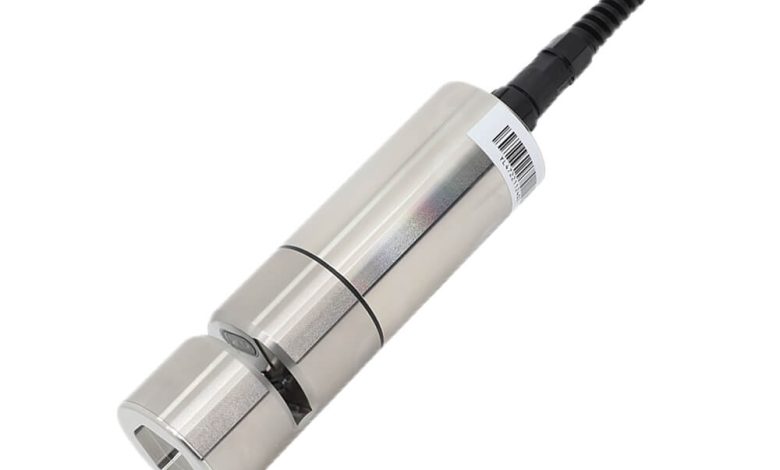Chemical Oxygen Demand Sensors: A Key to Cleaner Water and Safer Ecosystems

Water quality is essential to life on Earth, yet the increasing threats of pollution make safeguarding our water resources more challenging than ever. From industrial wastewater discharges to agricultural runoff, human activities are constantly introducing pollutants into water systems, affecting ecosystems and human health. In this complex challenge, chemical oxygen demand sensor are proving to be indispensable tools in ensuring cleaner water and healthier ecosystems.
In this article, we will explore the crucial role COD sensors play in monitoring water quality, the benefits they offer to industries and environmental agencies, and how they contribute to safer ecosystems and sustainable water management practices.
What Is Chemical Oxygen Demand (COD)?
Chemical Oxygen Demand is a crucial metric used to evaluate water quality. It measures the amount of oxygen required to oxidize organic and inorganic compounds in a water sample. This demand is an indicator of the pollution load present in the water, as organic materials—such as sewage, industrial waste, or agricultural runoff—consume oxygen as they decompose. A high COD level typically indicates higher concentrations of organic pollutants, which can reduce oxygen availability for aquatic life.
Monitoring COD is critical because it provides insight into both the biological and chemical components of pollution in water. Unlike other water quality parameters, COD takes into account all types of organic matter, whether biodegradable or non-biodegradable, making it an excellent overall indicator of water quality.
The Role of COD Sensors in Monitoring Water Quality
Traditionally, measuring COD was a time-consuming process that involved collecting water samples, sending them to laboratories, and waiting hours or even days for results. This method lacked the immediacy needed for effective pollution control and management. Enter the COD sensor—a modern device that provides real-time monitoring of water quality by continuously measuring COD levels.
These sensors utilize electrochemical or optical technology to determine the amount of oxygen consumed during the oxidation of organic matter in water. By offering continuous, accurate, and real-time data, COD sensors enable faster decision-making and allow for more effective water quality management.
Here are some ways COD sensors are transforming water quality monitoring:
1. Early Detection of Pollution
Pollution in water bodies can have a devastating impact on aquatic ecosystems, and the earlier it is detected, the easier it is to mitigate its effects. With traditional testing methods, water quality tests could take days, making it difficult to respond in time to prevent environmental damage. COD sensors, however, provide real-time measurements of organic pollutants in water, enabling swift detection of contamination.
For example, if an industrial plant discharges wastewater that exceeds acceptable COD levels, a COD sensor placed downstream can immediately alert operators to the problem. This allows for timely interventions, such as adjusting wastewater treatment processes or stopping the discharge before the pollution spreads.
2. Real-Time Water Quality Monitoring
The ability to monitor water quality continuously, without delays, is one of the greatest advantages of COD sensors. These devices operate in real-time, providing continuous data streams on COD levels. This is especially valuable in areas like wastewater treatment plants, where continuous monitoring is essential to maintain compliance with environmental standards.
For instance, a municipal wastewater treatment facility can use COD sensors to continuously measure the quality of incoming (influent) and outgoing (effluent) water. By keeping track of these levels, operators can optimize the treatment process to ensure that the treated water meets safety standards before being released back into rivers or lakes.
3. Optimizing Wastewater Treatment
In wastewater treatment facilities, effective management of COD is critical to achieving high water quality. COD sensors help optimize treatment processes by providing real-time data about the organic load in the wastewater. This allows operators to adjust treatment parameters, such as chemical dosing and aeration, ensuring the water is treated efficiently and within regulatory limits.
For example, if a sensor detects a sudden spike in COD levels, operators can immediately adjust the oxygen levels in the aeration tanks or add more chemicals to break down the organic matter. This results in more efficient use of resources and reduces the risk of non-compliance with water quality regulations.
4. Preventing Ecological Damage
Aquatic ecosystems are particularly sensitive to changes in water quality. High COD levels can deplete the oxygen in water, which negatively affects fish, plants, and other aquatic organisms. Continuous monitoring with COD sensors ensures that water bodies maintain a healthy balance of oxygen, reducing the risk of oxygen depletion and subsequent harm to aquatic life.
In rivers, lakes, and estuaries, COD sensors provide real-time data that can help environmental agencies track the health of aquatic ecosystems. If an area experiences a sudden rise in COD, it can indicate the presence of contaminants like sewage or industrial runoff. By detecting such pollution events early, environmental authorities can take proactive measures to protect the ecosystem, such as issuing warnings or implementing emergency cleanup efforts.
5. Enhancing Compliance with Environmental Regulations
Governments around the world have implemented stringent water quality regulations to protect ecosystems and public health. COD sensors help industries and municipalities comply with these regulations by providing continuous, real-time data that ensures wastewater and effluent meet acceptable standards.
In many jurisdictions, industries are required to monitor and report their wastewater discharge to ensure it does not exceed specified COD limits. COD sensors can help automate this reporting process, ensuring compliance and reducing the risk of penalties. The ability to constantly monitor and record COD levels also improves transparency and accountability in environmental management.
Applications of COD Sensors in Environmental Protection
-
Wastewater Treatment Facilities COD sensors are commonly used in wastewater treatment plants to monitor the quality of influent (incoming water) and effluent (treated water). By continuously measuring COD levels, operators can adjust treatment processes to ensure that the water leaving the plant meets environmental regulations and is safe for release into natural water bodies.
-
Industrial Effluent Monitoring Industrial facilities that discharge wastewater, such as chemical plants, paper mills, and food processing plants, use COD sensors to monitor the quality of their effluent. The sensors help ensure that discharges do not exceed legal COD limits, preventing pollution of nearby rivers, lakes, or oceans.
-
Agricultural Runoff Management Agriculture can contribute significant levels of organic pollutants to water systems, especially during rainstorms when fertilizers and pesticides are washed into nearby rivers or streams. COD sensors can monitor these runoff events, helping to identify pollution sources and enabling better management practices in agricultural areas.
-
Environmental Monitoring of Natural Water Bodies Environmental agencies and research organizations use COD sensors to monitor the health of rivers, lakes, and oceans. By continuously tracking COD levels, they can identify trends in water quality, detect pollution events, and assess the overall health of aquatic ecosystems.
The Future of COD Sensors in Environmental Protection
As technology continues to advance, the capabilities of COD sensors are only expected to grow. Innovations in wireless communication and cloud technology will allow for remote monitoring of water quality in real time, providing data access from anywhere in the world. This will make it easier for environmental agencies, businesses, and municipalities to monitor and manage water quality on a global scale.
Additionally, the integration of artificial intelligence (AI) and machine learning algorithms will improve the predictive capabilities of COD sensors. These technologies could help forecast water quality trends, predict pollution events, and optimize treatment processes, further enhancing water management practices and environmental protection efforts.
Conclusion
Chemical Oxygen Demand sensors are playing a pivotal role in revolutionizing water quality monitoring and improving environmental protection. By providing real-time, accurate data on the level of organic pollutants in water, these sensors enable quicker, more informed decisions that help prevent ecological damage, optimize water treatment processes, and ensure compliance with environmental regulations.
As water quality challenges continue to grow with increasing industrialization and climate change, COD sensors will be essential tools in maintaining clean, safe water for both humans and ecosystems. With ongoing technological advancements, these sensors will continue to shape the future of water management and contribute to a more sustainable, healthy planet.









